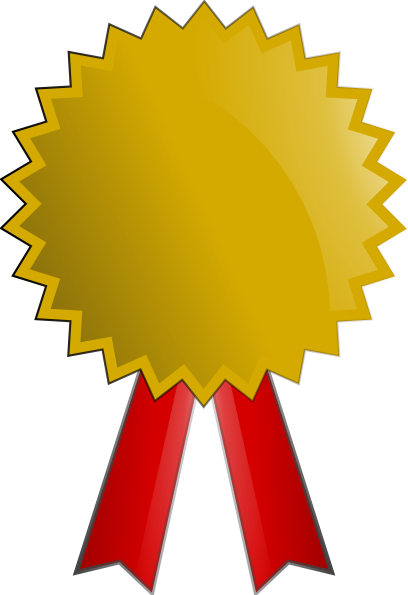Team:ETH Zurich
From 2013.igem.org
(Difference between revisions)
| Line 28: | Line 28: | ||
<li><b><br>Information Processing</b><br><br> Sender cells (mines) express LuxR protein, which catalyzes the production of a small molecule, called OHHL. This molecule diffuses through the agar plate and reaches the receiver cells called non-mine colonies. These colonies are designed to distinguish between different concentrations of the signaling molecule OHHL and translate this analog information into the expression of different sets of reporters. The continuous signal is digitized through a set of mutated LuxR promoters with different OHHL sensitivities acting as highpass filters. | <li><b><br>Information Processing</b><br><br> Sender cells (mines) express LuxR protein, which catalyzes the production of a small molecule, called OHHL. This molecule diffuses through the agar plate and reaches the receiver cells called non-mine colonies. These colonies are designed to distinguish between different concentrations of the signaling molecule OHHL and translate this analog information into the expression of different sets of reporters. The continuous signal is digitized through a set of mutated LuxR promoters with different OHHL sensitivities acting as highpass filters. | ||
</li> | </li> | ||
| - | |||
<li><b><br>From Minesweeper to Colisweeper </b><br><br> Mines secrete the signaling molecule OHHL whereas non-mines process the signal after diffusion of OHHL through the agar. High-pass filters were constructed to control the expression of different orthogonal hydrolases in non-mines. These were tuned to express hydrolases depending on the concentration of the OHHL molecules from the surrounding mines. The colors yellow, salmon and magenta corresponds to zero, one and two mines around a colony. Additionally, the mines express their own hydrolase which when added with the multi-substrate gives blue color. The constant expression of <i>lacZ</i> enables the flagging of both mines and non mine colonies turning the colonies green. | <li><b><br>From Minesweeper to Colisweeper </b><br><br> Mines secrete the signaling molecule OHHL whereas non-mines process the signal after diffusion of OHHL through the agar. High-pass filters were constructed to control the expression of different orthogonal hydrolases in non-mines. These were tuned to express hydrolases depending on the concentration of the OHHL molecules from the surrounding mines. The colors yellow, salmon and magenta corresponds to zero, one and two mines around a colony. Additionally, the mines express their own hydrolase which when added with the multi-substrate gives blue color. The constant expression of <i>lacZ</i> enables the flagging of both mines and non mine colonies turning the colonies green. | ||
</li> | </li> | ||
| + | <li><b><br>Hydrolase Reactions</b><br><br> As a reporter system we use a set of orthogonal hydrolases: alkaline phosphatase (<i>phoA</i>), β-galactosidase (<i>lacZ</i>), acetylesterase (<i>aes</i>), β-N-Acetylglucosaminidase (<i>nagZ</i>) and β-glucuronidase (<i>gusA</i>). Each hydrolase can react with its respective substrate within minutes resulting in a fast, colorful output. Quick response times and the ability to read the output without using instruments are essentials for a fast gameplay.</li> | ||
<li><b><br>The Model</b><br><br>As our bio-game is based on processing the OHHL concentration in the non-mine colonies, the diffusion of OHHL in the agar is vital to the system. The diffusion was modeled by carrying out simulations to determine the time and distance of diffusion. In addition to OHHL diffusion, we modeled synthesis, regulation and degradation reactions of the proteins involved in our genetic circuits. To account for both processes: diffusion and reactions; we developed a spatio-temporal model in two dimensions comprised by three modules: mines, receivers, and the agar plate. Finite element methods were used to solve the system of partial differential equations (PDEs). Our model turned out to be very valuable in the circuit refinement and the design of experiments. Moreover, we continually improve out model by incorporating parameters from our own experimental data. | <li><b><br>The Model</b><br><br>As our bio-game is based on processing the OHHL concentration in the non-mine colonies, the diffusion of OHHL in the agar is vital to the system. The diffusion was modeled by carrying out simulations to determine the time and distance of diffusion. In addition to OHHL diffusion, we modeled synthesis, regulation and degradation reactions of the proteins involved in our genetic circuits. To account for both processes: diffusion and reactions; we developed a spatio-temporal model in two dimensions comprised by three modules: mines, receivers, and the agar plate. Finite element methods were used to solve the system of partial differential equations (PDEs). Our model turned out to be very valuable in the circuit refinement and the design of experiments. Moreover, we continually improve out model by incorporating parameters from our own experimental data. | ||
</li> | </li> | ||
| Line 58: | Line 58: | ||
</li> | </li> | ||
| + | <li> | ||
| + | <a href="https://2013.igem.org/Team:ETH_Zurich/Circuit"><img src="https://static.igem.org/mediawiki/2013/b/b2/Colisweepercircuitfinal.png"/></a> | ||
| + | </li> | ||
<li> | <li> | ||
<a href="/Team:ETH_Zurich/Experiments_3"><img src="https://static.igem.org/mediawiki/2013/4/43/Outputsystemcolisweeper.png"/></a> | <a href="/Team:ETH_Zurich/Experiments_3"><img src="https://static.igem.org/mediawiki/2013/4/43/Outputsystemcolisweeper.png"/></a> | ||
</li> | </li> | ||
| - | |||
| - | |||
| - | |||
| - | |||
<li> | <li> | ||
<a href="https://2013.igem.org/Team:ETH_Zurich/Modeling/Overview"><img src="https://static.igem.org/mediawiki/2013//6/68/ModelSlide2.png"/></a> | <a href="https://2013.igem.org/Team:ETH_Zurich/Modeling/Overview"><img src="https://static.igem.org/mediawiki/2013//6/68/ModelSlide2.png"/></a> | ||
Revision as of 10:24, 24 October 2013
 "
"
















